With the cost of living on the rise, here's 7 vegetables and herbs to plant and maximise your produce profits. You'll learn some tips for planting them too.
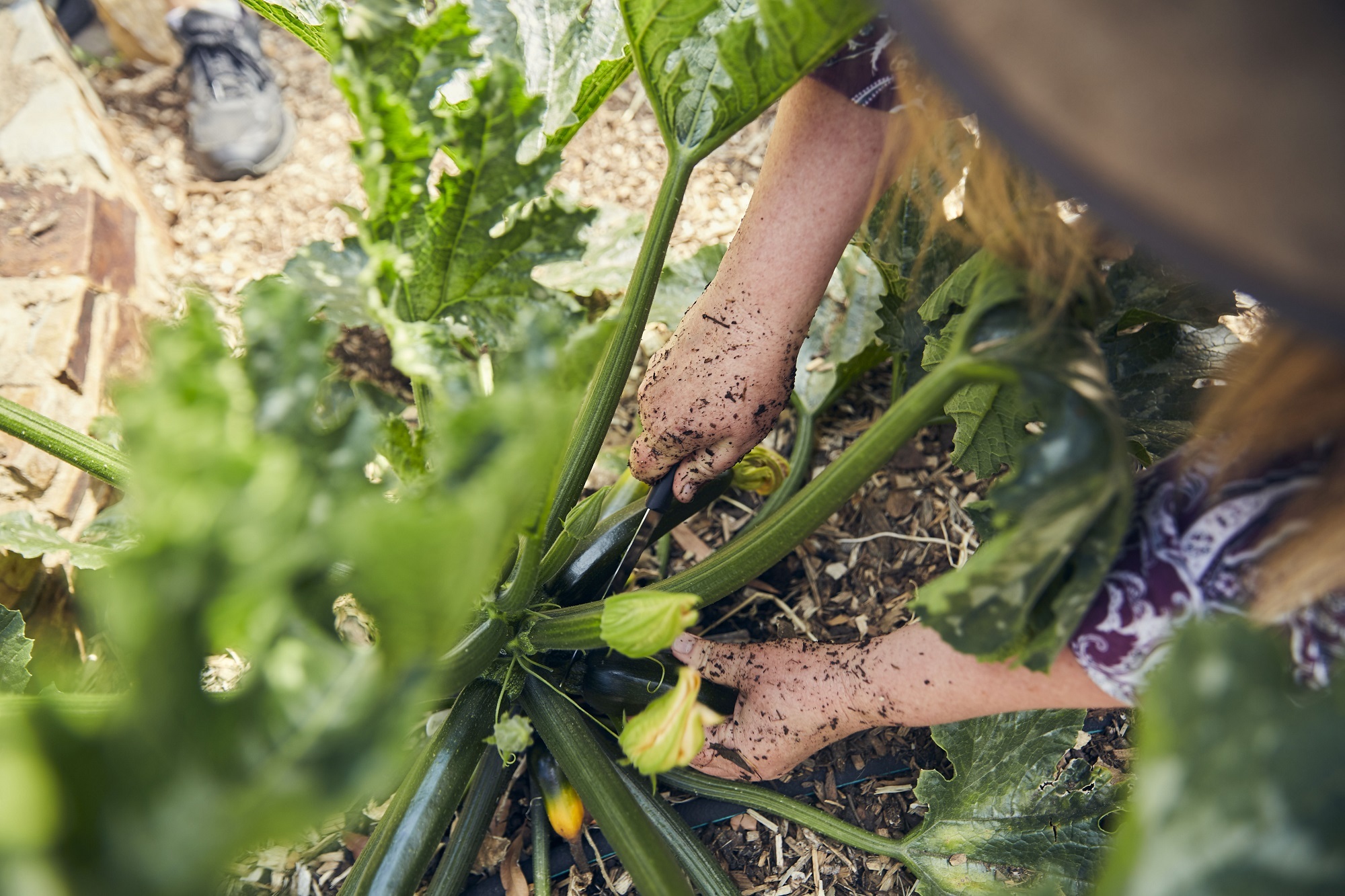
While it can be super rewarding to pick one head of broccoli you’ve been growing for 4 months, it’s the plants that you can harvest from more than once that give you the most value for money.
Here’s our top picks for veggies and herbs that you can pick from every day – or every couple of days – during their growing season.
1. Basil
Growing basil is a no-brainer. You can pick up a punnet of 6 basil seedlings at your local garden shop for the same price as a single bunch from the supermarket and have fresh basil all summer long.
Sweet basil, the most common variety, goes with just about everything – use it for garnishes, pesto, in stir fries and risotto… need we say more?
It also loves our climate, which is lucky for us. Thai basil on the other hand can be a little tricker to grow as it prefers a warmer climate to thrive.
To harvest, avoid picking individual leaves – instead, break pieces off at the stem, just above the next lot of leaves.
This can actually be quite low down the plant but make sure you never pick more than a third of the whole thing – that goes for any edible plant. Harvesting more than a third may stress the plant and slow down its growth.
While your plant is little, stick to just pinching off the top few leaves, which will encourage it to grow into a bush.
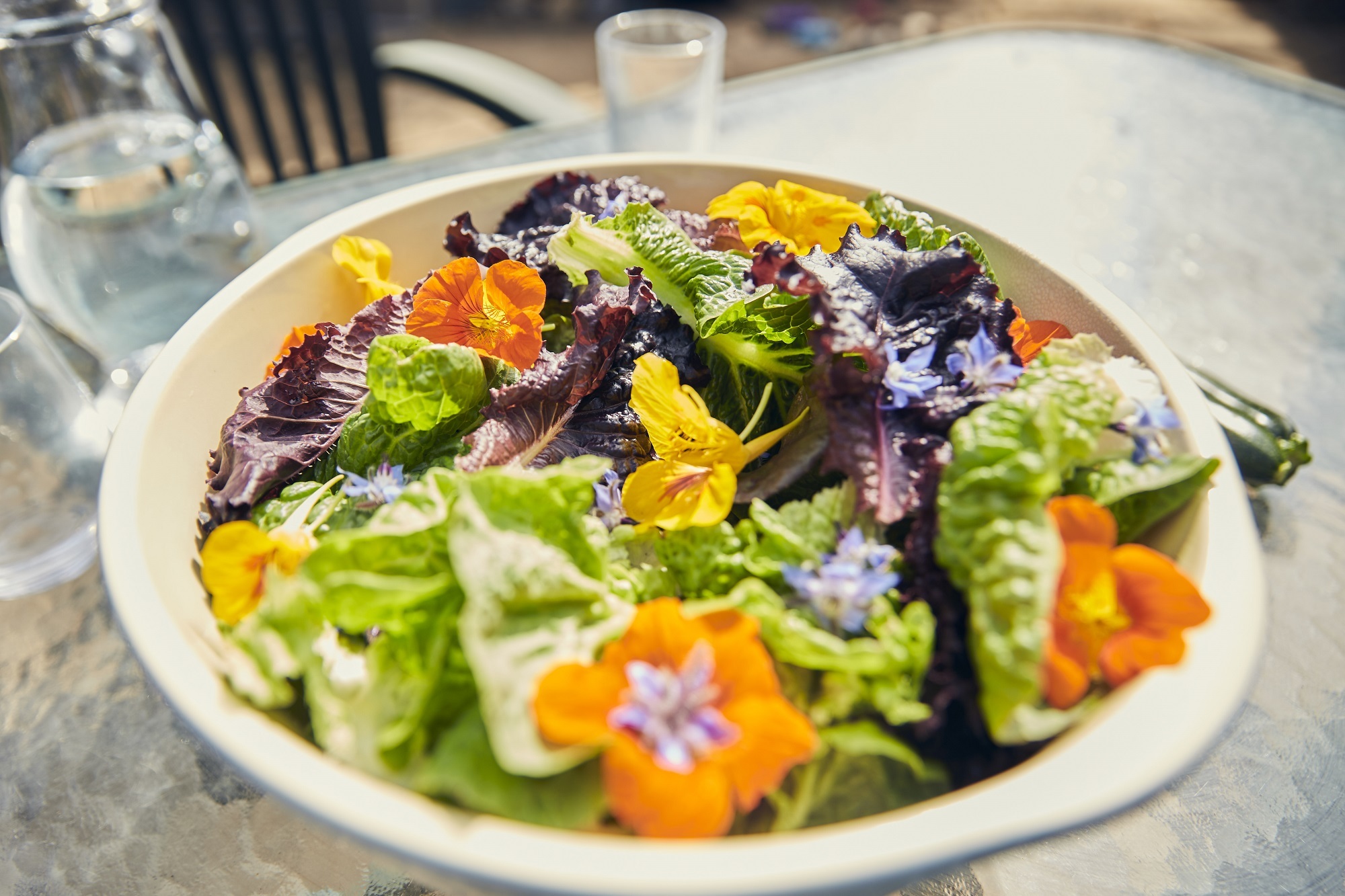
2. Salad greens
Let’s be real; it’s not possible to overrate salad greens. All that goodness inside those lush and crispy leaves! Plus, they’re a great way to green up your backyard – or even your balcony.
Grab yourself some baby spinach and pick-again lettuce – the type that you can harvest from time and time again. This differs from iceberg lettuce, which grows into a ball that you will only be able to harvest once.
Seeds are the most economical option – you’ll get more for a similar, or maybe even cheaper, price than seedlings.
However, if you want a head-start, salad greens can be planted from seedling, but we recommend you check out our seedling planting advice first.
There are so many different types of lettuce – we recommend planting a variety of them. Harvard Medical School recommends getting as many different colours as possible in your diet, as the colours – which relate to plant nutrients – correlate with different health benefits.
Harvest by picking the leaves at the bottom, on the outside of the plant. These leaves are potentially shed by the plant anyway, so this helps the growing process.
Avoid taking the baby leaves from the centre of the plant, as this is where it will continue to grow from.
When planting, put them together in a little block, or a row, together with our next bang for buck recommendation – rainbow chard.
3. Rainbow chard
Want to grow a veggie that most of your friends won’t even be able to find in the shops?
Rainbow chard grows super easily but because it doesn’t keep well, it can be hard to find at the supermarket. So the homegrown variety is your best bet of accessing it.
Aside from exclusivity, rainbow chard adds pink, red and yellow colours to your diet AND it’s easy to grow – bonus!
Harvest this plant in the same way as lettuce, by picking the leaves at the bottom on the outside of the plant, and be sure to eat the stalks! This will reduce food waste and ensure you’re eating all the colours of the plant.
One way to use the stalks is to cut them up finely and fry them with your onions.
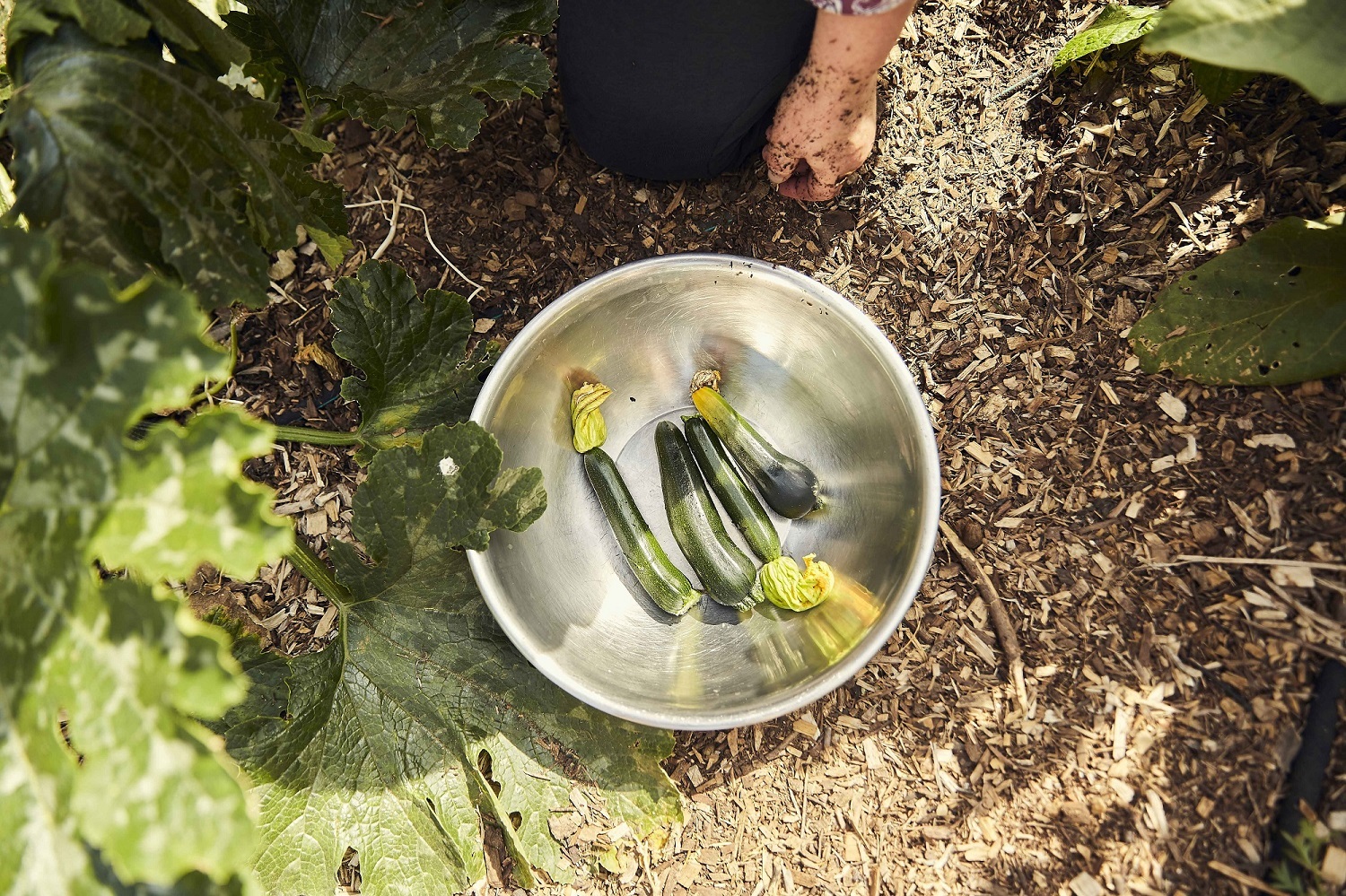
4. Zucchini
Zucchini plants are prolific – you’ll only need one plant and you’ll probably still end up with more zucchinis than you know what to do with!
Luckily, they’re a super versatile veggie – think zucchini martinis (if you’re over 18!), chocolate cake, zucchini bake, zucchini dressing – yes, it’s a thing – and roasted zucchinis.
If you’re gardening in a small space, zucchinis might not be for you because they can get quite big – check out these options instead.
If you have a decent sized area to play with or a large pot and are looking for a simple way to green up a space, you will only need one happy and healthy zucchini plant to do it.
They’re best grown from seed and planted with the pointy end facing up. One zucchini plant is often enough for a family, so a packet of seeds could be shared with your family and friends.
Alternatively, go to an organic shop and buy a beautiful zucchini to save the seeds from for next year. Or you could try a seed library – contact your local library to see if they have one.
Tip: Not every seed will grow, so to maximise success, plant 2 or 3 zucchini seeds together, just a few centimetres apart. See which one grows the strongest and snip the others off at the base. Each zucchini plant needs at least 50 cm space, so even if they all grow, you will need to pick a favourite to keep! They can't be grown close together.
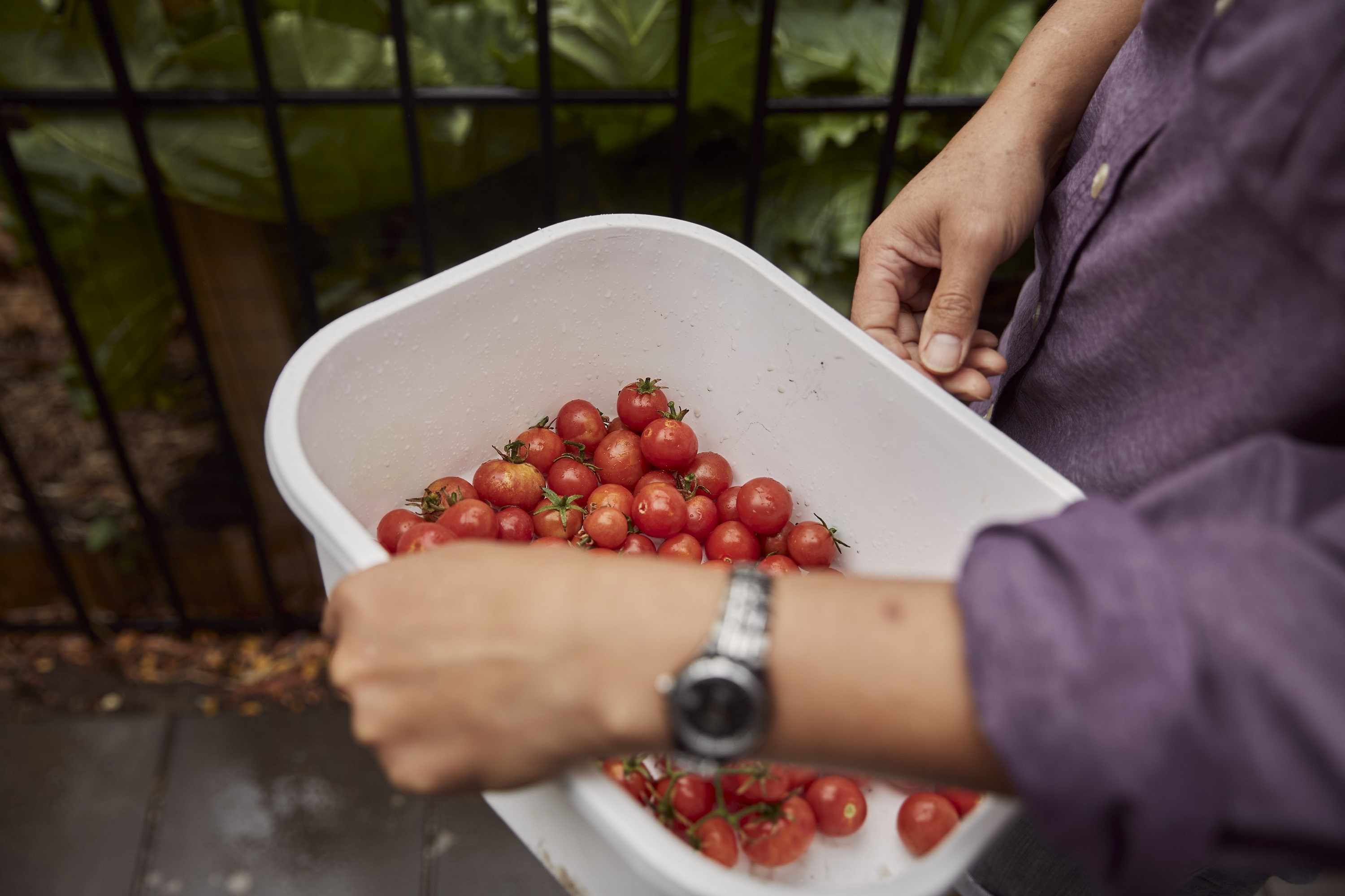
5. Cherry tomato
A healthy, happy cherry tomato plant will give you so many tomatoes you won’t know what to do with them.
Unlike other seedlings, tomatoes like to have part of their stalk buried – up to the first leaves – when they are first planted. Doing this creates a stronger plant because where those leaves come out, new roots will sprout.
Cherry tomatoes – and other tomatoes – need at least 8 hours of sun per day and they don’t like too much fertiliser. How do you know what too much is? The packet should tell you what they like – don’t be tempted to use more.
If you give your tomatoes too much fertiliser you will get lots of green growth but very few flowers and therefore, not much fruit.
Hot tip: Plant cherry tomatoes next to your basil so you can conveniently harvest them together. We don’t need to convince you about this delicious combo.
6. Long, green beans
When we talk about long, green beans, we mean the ones where you can eat the whole thing – sometimes thought of as French beans or string beans. They’re the most common to grow.
These beans differ from the likes of broad and faba beans where you have to let the seed pods get bigger and then harvest the beans from inside the little shell.
Green beans are a relatively quick-growing plant, giving you something to harvest faster than most other plants. As they are best grown from seed, one seed packet with 50 seeds makes this a very cheap plant to grow.
A tip is to stagger your planting – meaning to plant a second crop 4 weeks after your first planting – so that you will have a second crop of green beans maturing as the first lot is finishing up.
Green beans are so versatile you can harvest a few every day and add them to your favourite meals. Slice them up for curries and stir fries, lightly steam them and add to salads or toss in a hot pan with olive oil and garlic for a delicious super quick side dish.
At the end of the season, leave a couple of pods to fully mature and dry out on the plant, and save these seeds for next year. Shell them and place in a paper bag and store them somewhere cool and dark.
You can choose bush or dwarf varieties, which grow as little bushes up to 30 cm high, or climbing varieties that will require a trellis or something to climb up – which is a great way to make the most of a small space.
Hot tip: New bean shoots are a fave for some garden critters such as slaters, so creating rings of protection – like the ones we recommend for cucumbers – and planting inside of them is a great way to ensure your beans get off to a good start and survive the first few days.
7. Sweet potatoes
Don’t be fooled by the name – sweet potatoes are a yam, not a potato. However, they’re still delish served mashed, roasted or as chips.
Sweet potatoes are sweet for your wallet too – one crop can feed your family over and over again. They will take over your garden bed if you let them, so it’s best to keep them contained or somehow separated from your other plants.
The part that you buy in the supermarket grows underground but the creeping, crawling mass of vine-looking leaves above ground are actually edible too and are delicious in Thai curries.
Kids absolutely love to go hunting for the tubers underground – it’s a bit like a treasure hunt as you have to dig around in an area to find them!
The best way to get started growing sweet potatoes is with what is called a ‘sweet potato slip’.
Here’s one method to create them:
- Buy an organic sweet potato. It must be organic, otherwise it will likely not grow.
- Suspend it half in water, with the pointy end up, and the round end down
- Change the water every couple of days.
- Once green shoots form – this will take a while – wait for them to grow 30 cm long before gently snapping them off of the tuber
- Remove the bottom 50% of leaves and put your shoots in fresh water.
- These will quickly grow roots, ready to be planted in your garden
One sweet potato will grow up to 20 ‘slips’ and each slip will grow 4 to 7 sweet potatoes – so one sweet potato can be turned into over 100 more.
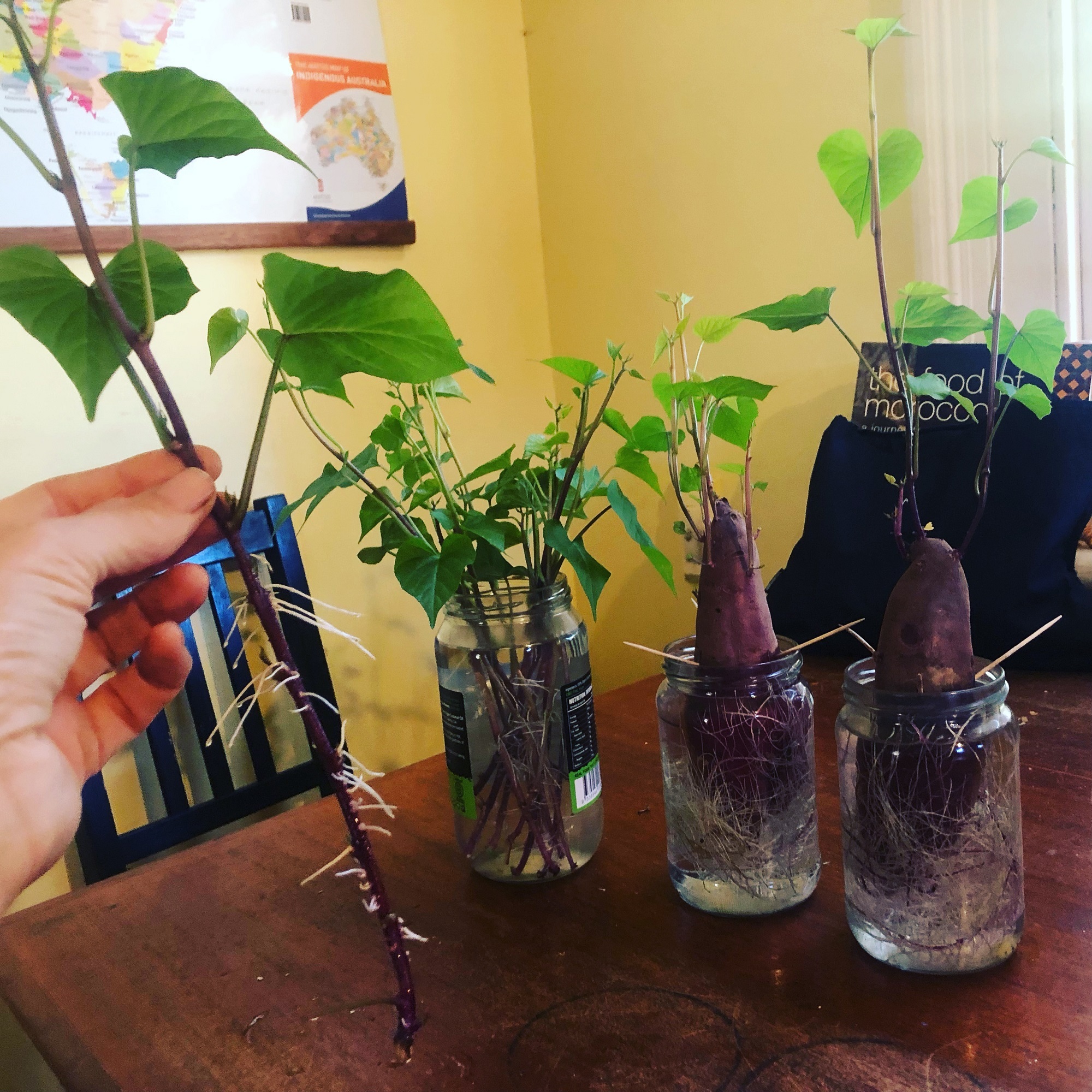
What is the most filling vegetable?
Talking about getting the most bang for your buck, another way you can look at it is to plant vegetables that are going to keep you satisfied for longer so that you consume less.
If you’re looking to be full, we’d recommend sweet potatoes – because they’re starchy but low GI – or beans, which are high protein, helping you be fuller for longer.
What vegetable is the most versatile?
Planting versatile varieties is another way to make sure you get the most out of your vegetable patch.
It’s a matter of opinion but our vote is on zucchinis because you’ll get so many from a harvest you’ll be forced to find lots of different uses for them!
Of course, herbs, tomatoes, potatoes, spinach, onions, carrots and sweet potatoes can go in a lot of things too.
Find out more local gardening tips
Just beginning your food gardening journey? Head to our food gardening hub for more tips and tricks.
This article was originally published in October 2022.